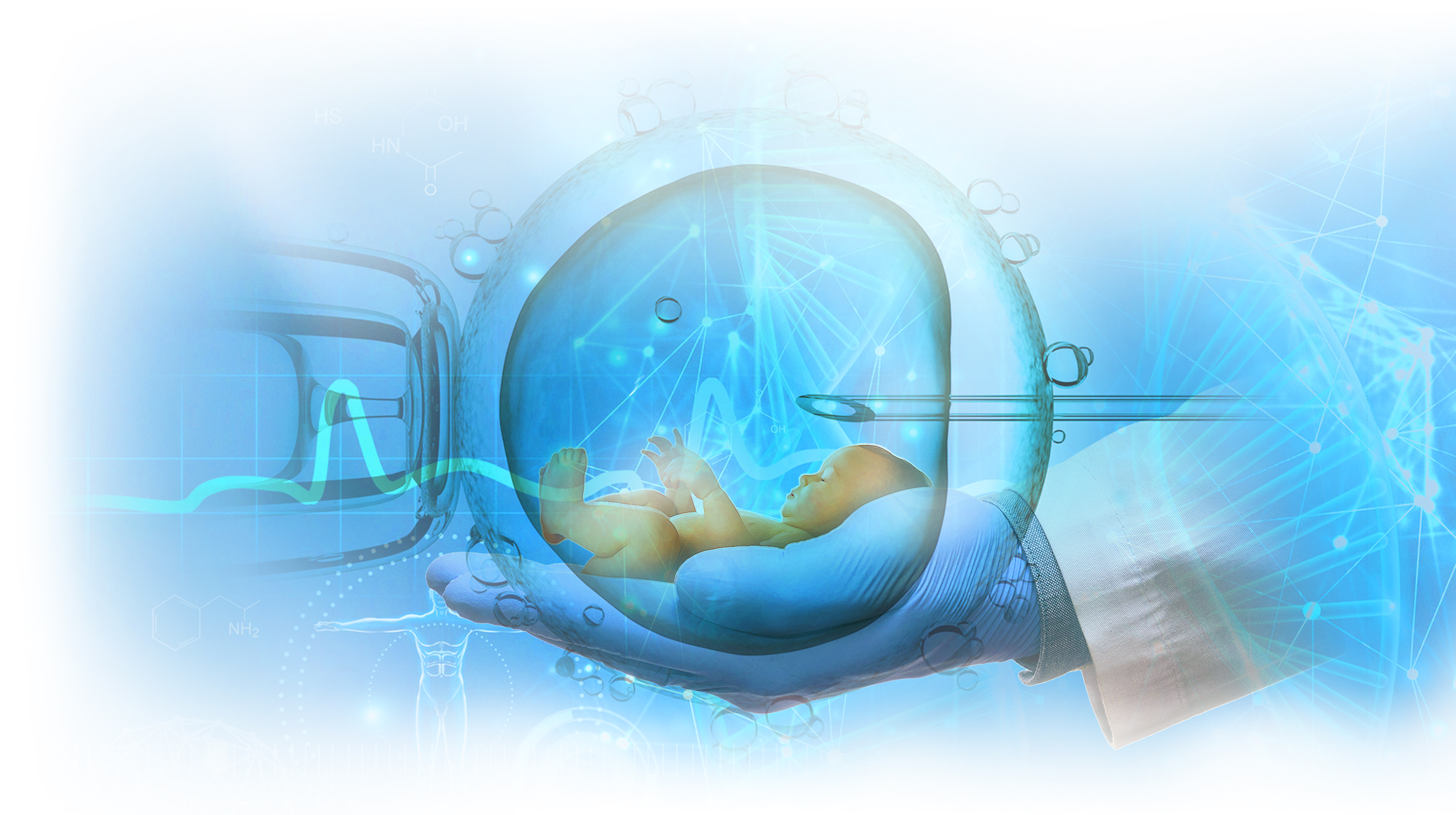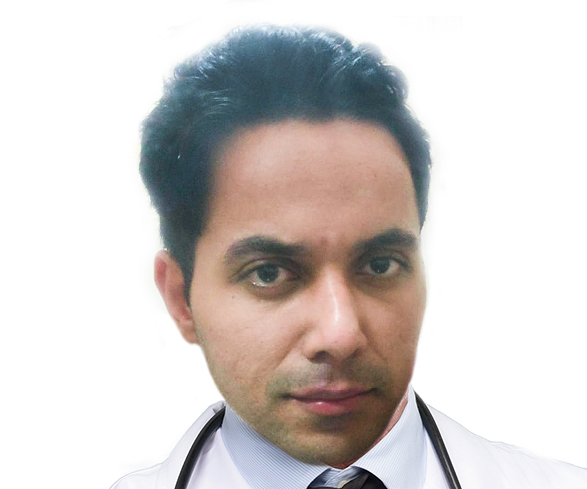

Editor-in-Chief, V·Pulse

Doctor at the National Health Services (NHS), United Kingdom (UK)
Infertility has been recognised by the World Health Organisation (WHO) and World Bank as a significant disability and impairment of function. Around 15% of couples are affected by infertility globally', and 1 in 6 local couples suffers from this issue2. Given that people are more often delaying marriage, the incidence of infertility has gradually increased in recent decades3. Apart from being a medical issue with psychological consequences, infertility also imposes sociocultural impacts on the affected couples. Thanks to the advancement in reproductive medicine, various assisted reproductive technology (ART) modalities have been developed to facilitate pregnancy. Nonetheless, this also initiated ethical and legal debates. The objective of this article is to outline the multifaceted adverse impacts of infertility, and discuss the ethical and legal dilemmas of ART.
Infertility -A Social Disease
Inferhhty is consIdered when couples faIl to concewe naturally after 12 months of regular sexual intercourse without contraceptives. The condition can be classified into primary and secondary infertility. Primary infertility is denoted for those females who have not conceived previously, whereas secondary infertility is defined as the inability to conceive or carry a baby to term after previously giving birth4.
Infertility affects over 48.5 million couples worldwide5. A population-based study by Zhou et al. (2017) reported that the prevalence of infertility among couples of reproductive ages in China reached 25%6. In Hong Kong, it has been reported that 1 in 6 couples suffers from the problem2. Given that fertility declines naturally with increasing age, the incidence of infertility has grown exponentially due to a delay in marriage and pregnancy in recent years. By virtue of the potential medical and psychosocial consequences of infertility, the WHO has recognised the condition as a specific disease entity and coined it as a social disease7.
Diagnosis of Infertility
While infertility is a multifactorial condition, its clinical diagnosis can be challenging. The first step of the diagnostic process is to collect an extensive case history of the couple with fertility problems, which includes collecting information on the duration of infertility, past medical and surgical history, as well as previous drug or alcohol abuse. For the female partner, details in menstrual pattern, the number of previous pregnancies and outcomes are essential, whereas the potential of impotence in the male partner has to be evaluated7.
Apart from the case history, a series of laboratory tests are required to confirm the diagnosis of infertility. For the male partner, semen analysis provides information on sperm production, and maturation, and the ejaculatory process". In contrast, assessment of structural (tubal patency and uterus) and biochemical status (tests on ovulation and evaluation on the levels of prolactin, thyroid-stimulating hormone (TSH), and progesterone) is essential for the female partner (Figure 1)7.

Figure 1. Infertility evaluation7, ICSI: lntracytoplasmic sperm injection
Infertility Is Not Only a Female Problem
According to the WHO, female infertility accounts for 37% of infertile couples. Ovulatory disorders are the most common identifiable factors of female infertility, accounting for approximately 25% of infertility diagnoses, followed by endometriosis and tubal infertility, defined as either obstructed fallopian tubes or the inability of the tubes to pick up an oocyte from the ovary due to pelvic adhesions9.
On the other hand, male factors, such as hypotestosteronism or low sperm count, have been reported in 35% of infertile couples. Azoospermia, i.e. ejaculate does not contain sperm, can be either due to obstructive or non-obstructive causes. Obstructive azoospermia is commonly due to an obstruction of sperm transport, whereas the most common cause of nonobstructive azoospermia is primary testicular failure10.
Remarkably, male infertility often co-exists with male sexual dysfunction (MSD). Generally, MSD can be divided into low sexual desire, erectile dysfunction, ejaculatory disorders, and orgasmic dysfunction, which adversely impact a male's psychosexual function and various quality of life domains11.
A Closer Look at Infertility-related Consequences
Infertility is not only a physiological problem. Instead, it is also a psychological consequence that should not be excluded. Former reports suggested that females are more adversely affected by infertility than males. Traditional beliefs advocate that the responsibility to reproduce and carry on the family legacy falls on females, particularly in the Chinese community. Hence, infertile females often feel inadequate females if they are unable to conceive12. The pain and loss associated with infertility frequently result in adverse psychological outcomes.
A local qualitative study by Tiu et al. (2018) involving 13 infertile females uncovered the cultural burden and psychological distress faced by the participants. A substantial amount of pressure for infertile females is from their parents-in-law. Apart from being blamed for not giving birth, their achievements in career or education are rejected by their in-laws. The in-laws would also compare the infertile females with other family members who have children. This negatively impacts the family's sense of coherence2.
The study further indicated psychological distress, including loss, anxiety and depression, a feeling of hopelessness, loss of control, anger and resentment and low life satisfaction among the respondents. Remarkably, some infertile females may attempt to isolate themselves from others, particularly those who have conceived or those with children. They may experience sadness or jealousy towards their friends who talk about their children2. A systematic review by Luk and Loke (2015) reported that infertile females experienced significantly higher risks for psychiatric disorders than fertile females12.
The adverse impacts of infertility affect not only females but also couples as a whole. A cross-sectional study by Ngai et al. (2020), which recruited 135 local Chinese couples at the subfertility clinics, showed that infertility-related stress carries a negative association with the quality of life of infertile couples and family sense of coherence. Notably, the infertility related stress on females had a negative association with their husbands' quality of life5. Similar to their female counterparts, infertile men experienced a higher level of psychological distress than fertile men12.
Interestingly, the literature reports inconsistent results regarding the impact of infertility on marital relationships. A study in Taiwan showed that wives were more worried than their husbands about being accepted by their in-laws and were less satisfied with their marriages than their husbands. On the contrary, a study in Poland found that infertile couples had significantly better relationships than fertile couples12. Perhaps cultural influence would partially explain the discrepancy.
On the other hand, there are studies assessing the impacts of infertility on the sexual relationship of couples. More importantly, the prevalence of sexual dysfunction was higher in infertile females than that of the fertile control group, whereas the dysfunction was found to be associated with age, partner's age, duration of marriage, infertility, and treatment, as well as the frequency of intercourse. Besides, it has been reported that, among infertile couples, wives showed higher levels of sexual dissatisfaction than their husbands. Moreover, a higher prevalence of sexual dysfunction and degree of erectile problems was reported in infertile men12.
Assisted Reproductive Technology - The Hope for Creating Life
Nowadays, there are various treatment options developed to improve fertility, including ovulation induction with pharmacologic treatments and ovarian stimulation. Additionally, timed intercourse and intrauterine insemination (IUI) may be used to achieve fertilisation at the time of ovulation10. Remarkably, the popularity of fertility preservation, e.g. elective oocyte freezing and in vitro fertilisation (IVF), has continuously increased in recent years.
Clomiphene and letrozole are 2 pharmacologic treatments developed for ovarian stimulation and ovulation induction. Clomiphene acts by blocking the negative feedback effect of circulating oestradiol, whereas letrozole blocks aromatase, hence reducing serum concentrations of oestradiol and stimulating pituitary gonadotropins10.
IUI is accomplished by placing sperm into the uterus 24 to 36 hours after an endogenous luteinising hormone (LH) surge or an exogenous ovulation trigger. However, a former Cochrane review (2016) showed no significant difference between IUI and timed intercourse14.
Owing to the natural decline in fertility with age, many couples with delayed marriages attempt to conceive through IVF. According to the report of the Council on Human Reproductive Technology (2022), there were 8,941 non-donor IVF and frozen-thawed embryo transfer (FET) cycles reported in 2022. A total of 5,510 (61.6%) were started with the intent to transfer at least one embryo, whereas the remaining 38.4% were banking cycles, where eggs or embryos were frozen for potential future use (Figure 2)15.

Figure 2. Type of reproductive technology procedures taken by patients (for non-donor IVF cycles only)15, ET: embryo transfer
A typical IVF cycle includes ovarian stimulation, oocyte retrieval, fertilisation and culture in vitro, and embryo transfer to the uterus. IVF refers to the co-culture of oocytes with sperm. In cases of severe male factor infertility or fertilization problems in previous IVF cycles, intracytoplasmic sperm insemination (ICSI) is advised 3. The success rate of IVF can be affected by various patient-specific factors, e.g. female age, and procedural factors, e.g. the number of injected oocytes (Figure 3)16. The reported local success rate of IVF reached around 35% per cycle3.

Figure3. Major factors affecting the success rate of IVF16, PCO: Polycystic ovary syndrome, ACC: Accuracy, BMI: Body mass index
The Ethical and Legal Issues in ART
A local survey of 990 Chinese adults indicated that >92% of the respondents were familiar with ART procedures. 31.5% of the females interviewed said they would consider cryopreservation of their oocytes or embryos if they could afford it, and 21.9% would encourage their female family members to do so17. Despite the high acceptance of ART, the ethical and legal issues associated with the technology have attracted extensive debate.
Age Restriction for ART
The welfare of the ART-born children is of the paramount ethical concern. While females seeking ART may naturally be unfit for pregnancy, particularly those in their late middle age who often require weighing the balance between risk and benefits for both the mother and the foetus. Even though the child may be born without any neurological or physical abnormality, dilemmas arise on whether the parent at older ages can provide sufficient support and care for the child. Thus, some argued that there should be an age restriction for ART, mainly the IVF18. Technically speaking, cryopreservation permits a child to be born after the death of his/her parents. This is another ethical issue that is worth considering.
Nonetheless, arguments against the age restriction in IVF have faced serious backlash since it is argued that females should have the right to choose when they want to have a child. Comprehensive medical coverage improving the physical health of females above the reproductive age and safety during pregnancy is now available, which allows the females to become healthy and active mothers giving birth to healthier babies. Nevertheless, setting an age restriction for ART would ignite the outcry of age discrimination.
Single Females and Same-sex Couples
Apart from parental age, allowing ART for single females and same-sex couples remains controversial. The legal restrictions on IVF and other forms of ART for single and same-sex couples vary between countries. In a survey of legislation in the 28 European U nion (EU) countries published in 2014, ART, including IVF for single females, was permitted in 11 countries, whereas some countries with a previous ban modified their legislations to allow IVF for single females later19. When considering the well-being of children born through IVF for single females or females in same-sex partnerships, llioi and Golombok (2015) suggested that adolescents born through all ARTs seemed to be well-adjusted psychologically and have positive parent-adolescent relationships compared with those naturally conceived20.
Sex Selection
Perhaps the current most challenging ethical question in reproductive medicine is the application of preimplantation genetic testing (PGT). Originally, PGT offered a way to identify chromosomal genetic abnormalities, thereby avoiding a possible late-term abortion or the birth and early death of an infant. However, there are emerging cases in which PGT is being considered for late-onset, variably penetrant, and less severe conditions. Remarkably, IVF and PGT can be used to select embryos'gender, and the use of ART for gender selection of embryos has infuriated ethical and legal concerns18.
The Line in Ethical Dilemmas - Medical Versus Non-medical
Although more couples choose not to give birth nowadays, the inability to conceive naturally signifies a symbolic loss of future dreams, particularly in the traditional Chinese community. Furthermore, there is an increasing trend of delaying marriage, which has attracted the attention of medical professionals and government officials. Contrary to this, while the advances in ART have effectively improved fertility over the last decade, the associated cultural, ethical, and legal constraints have left medical professionals and infertile couples perplexed.
Given that human rights formed the legal basis of bioethics, the modern evolution of human rights no longer requires legal marriage as a condition for family foundation, recognising nontraditional families, such as same-sex couples, and their rights to access ART. In the absence of legal prohibition, couples can seek ART treatments, and qualified healthcare providers can provide them, after discussing the repercussions of the procedure with the patients. Nonetheless, many questions persist since deciding if a particular procedure is ethically correct is often difficult. In this regard, the Chinese philosopher Zhu Xi believed that eating for taste but not for hunger is solely a fulfilment of human desire, which is unethical21. Accordingly, it is reasonable to believe that ART for non-medical purposes, such as gender selection, may fulfil only human desire and is thus unethical since the concept challenges the idea of natural selection and is not for treating infertility.
References
1. Badar et al. Int J Reprod Contracept Obstet Gynecol 2022; 11: 2320-8. 2. Tiu et al. Int J Qua/ Stud Health Well-being 2018; 13. DOl:10.1080/1 7482631.2018.1554023. 3. Lui et al. Hong Kong Medical Journal 2019; 25: 468-72. 4. Nik Hazlina et al. BMJ Open 2022; 12: e057132. S. Ngai and Loke. Hum Fertil (Camb) 2022; 25: 540-7 6. Zhou et al. BJOG 2018; 125: 432-41. 7. 5zamatowicz and 5zamatowicz. Adv Med Sci 2020; 65: 93-6. 8. Centola. Encyclopedia of Reproduction (Second Edition) 2018. 9. Walker and Tobler. Female Infertility - StatPearls - NCBI Bookshelf 2022. 10. Carson and Kallen. JAMA 2021; 326: 65. 11. Chung et al. World J Mens Health 2023; 41. DOl:10.5534/WJ MH.230180. 12. Luk and Loke. J Sex Marital Ther 2015; 41: 610-25. 13. Legro et al. New England Journal of Medicine 2014; 371: 119-29. 14. Cissen et al. Cochrane Database Syst Rev 2016; 2. DOl:10.1002/14651858.CD000360.PUB5. 15. Council on Human Reproducti ve Technology 2022 Annual Statistics. 2023. 16. Amini et al. Int J Fertil Steril 2021; 15: 128. 17. Raghav et al. Eur J Public Health 2020; 30. DOl:10.1093/EURPUB/CKAA166.907. 18. Asplund. Ups J Med Sci 2020, 125: 192. 19. Busard/) et al. Biomed Res Int 2014; 2014. DOl:10.1155/2014/307160. 20. llioi and Golombok. Hum Reprod Update 2015; 21: 84. 21. Translations with Chinese Text丨Neo-Confucianism





